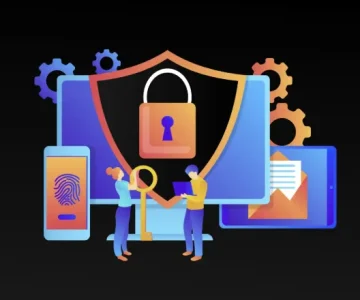In higher education, technology has shifted from being an optional add-on to a core component of teaching and learning. Colleges and universities are increasingly embracing digital transformation to deliver better, more accessible educational experiences for students, faculty, and staff. From AI-driven tools to immersive virtual environments, modern innovations are redefining how institutions operate, engage learners, and prepare graduates for an evolving world.
How Technology is Reshaping the Academic Experience
Artificial Intelligence
AI is revolutionizing the way educators teach and students learn. Beyond automating repetitive tasks like grading and scheduling, AI-powered chatbots can answer routine student questions, freeing up faculty for higher-value work. More importantly, AI-driven analytics can identify learning trends, highlight areas where students need extra support, and help customize coursework to suit individual needs. This not only improves academic outcomes but also ensures education is inclusive and responsive to diverse learners.
Virtual and Augmented Reality
VR and AR are turning abstract theories into hands-on experiences. Medical students can simulate surgeries without patient risk, history majors can explore ancient civilizations in 3D, and engineering students can visualize complex designs in real time. These immersive technologies bridge the gap between theory and practice, fostering deeper understanding and preparing students for real-world applications.
Cloud Computing
The cloud has expanded the reach of higher education, enabling robust online learning platforms and easy access to resources anytime, anywhere. Faculty can update and share course materials instantly, while students collaborate in real time regardless of location. Cloud-based systems also allow institutions to leverage big data analytics, improving both academic performance tracking and operational efficiency.
Enhancing Student Engagement and Opportunities
Technology has transformed collaboration, enabling group work across cities, countries, and even continents. Platforms like Microsoft Teams, Google Docs, and Miro facilitate real-time interaction, while adaptive learning tools tailor educational content to each student’s strengths and weaknesses.
Assessment methods are also evolving. AI-based grading tools can deliver objective feedback, while game-based evaluations make testing more engaging. Additionally, online courses, MOOCs, and virtual exchange programs give students unprecedented access to diverse perspectives and educational opportunities, building the skills needed for a globalized workforce.
Empowering Faculty Through Innovation
Technology is changing the role of professors from traditional lecturers to architects of interactive learning experiences. Digital tools allow instructors to blend live sessions with self-paced modules, track progress in real time, and adjust their teaching to better meet student needs. Collaboration among faculty has also become easier, with digital platforms supporting shared research, peer mentoring, and collective problem-solving.
Strategies for Institutional Leaders and CIOs
For universities to fully benefit from digital transformation, leadership—especially CIOs—must take a strategic and inclusive approach:
- Develop a Clear Technology Roadmap: Align new tools with institutional goals and create a plan for integration and growth.
- Foster a Culture of Collaboration: Encourage faculty, staff, and students to experiment with new ideas and share best practices.
- Build Future-Ready Digital Environments: Invest in infrastructure, tools, and platforms that can adapt to evolving needs.
- Prioritize High-Impact Projects: Focus on initiatives that significantly improve teaching, learning, and research.
- Strengthen Research Capabilities: Equip researchers with cutting-edge tools and streamline administrative processes.
- Engage Stakeholders: Regularly gather feedback from faculty, students, and department heads to ensure technology meets actual needs.
- Attract and Retain Talent: Offer professional development opportunities and access to innovative resources.
- Leverage Data for Decisions: Use analytics to improve student support, optimize courses, and enhance operational efficiency.
- Safeguard Systems: Implement strong cybersecurity measures to protect data and intellectual property.
The Path to Lasting Transformation
Digital transformation is not a one-time initiative—it’s an ongoing process that requires vision, commitment, and adaptability. By integrating technology into every facet of operations, from classrooms to research labs, institutions can offer richer learning experiences, support faculty innovation, and strengthen their competitive position in the education sector.
When embraced strategically, technology enables colleges and universities to not only keep pace with change but to lead it—creating academic environments that prepare students, faculty, and communities for success in an increasingly connected world.





